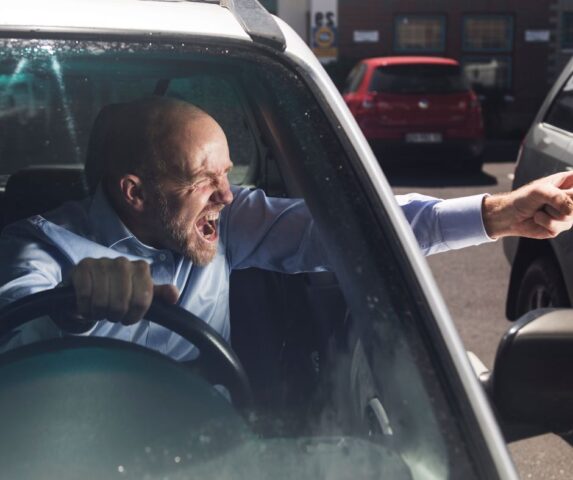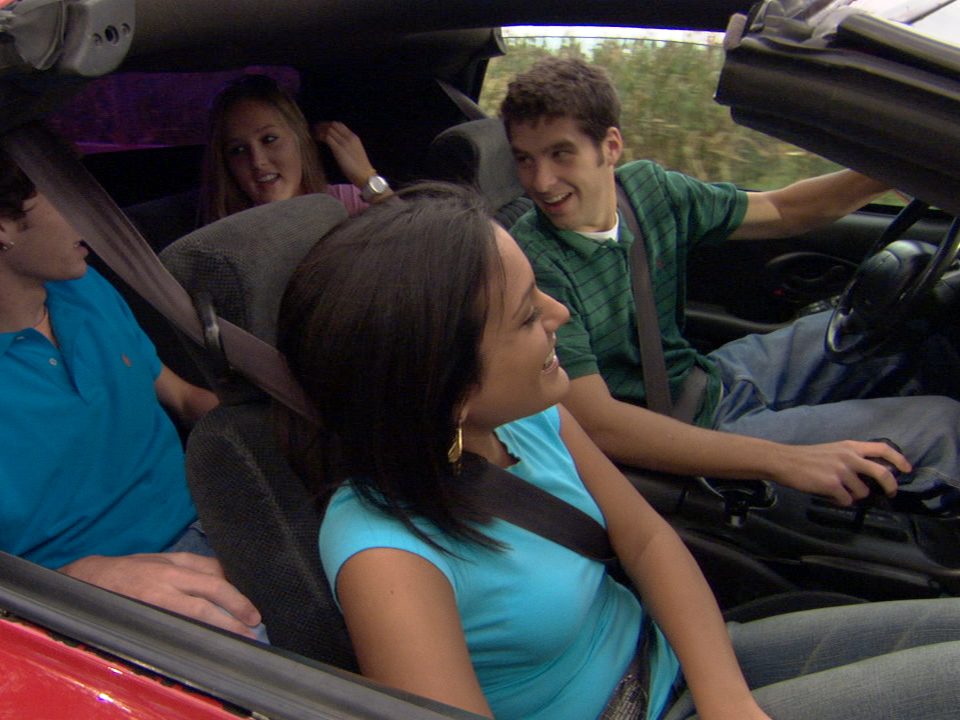- WE SAVE LIVES
- info@wesavelives.org
How to Defuse an Angry Driver

Opportunity for Law Enforcement Leaders to SPEAK UP and Save Lives!
January 14, 2025
The Downs Story
September 19, 2016This blog post was written by Mi Ae Lipe and originally featured on the DrivingintheRealWorld blog. Thank you Mi Ae for sharing information on this important topic!
As passengers, we’ve all had the experience of being uncomfortable when another person is driving us. It could be our spouse, partner, grown child, friend, or parent. It could be someone we’ve known all our lives or a stranger we barely met a few minutes ago. Regardless of who or what the situation is, we all deserve to be safe—both us and others.
One very difficult scenario is when you’re riding with an angry driver, and their rage is affecting their judgment behind the wheel. They might be driving faster, steering jerkily, or tailgating. As a passenger, it’s critical that you try to defuse the tension, or at least not make it worse.
Several years ago, I was a passenger riding up front with my son, who was driving in downtown Madison, and his girlfriend was in the backseat. I wanted to turn up the heat on my side of the car, and this set him off for whatever reason. He just exploded with fury. Taken aback, I stared at him dumbfounded since my innocent desire for more warmth was in no way commensurate with his level of rage.
His girlfriend and I started protesting, which only angered him more. Most alarming was his repeatedly turning sideways to look back at his girlfriend (therefore taking his eyes off the busy road) while utterly screaming at both of us. Adrenalin was taking over, jeopardizing his judgment and thinking.
I realized what was happening and quickly shouted at her to stop arguing with him before he did something rash. At this point, it didn’t matter who was wrong or right—we all stood to lose, as well as any innocent driver or pedestrian who might cross paths with us.
The girlfriend got the memo, and instantly we all fell silent. The extreme emotion of the moment passed, and the air became heavy with tension and sullenness. But at least it was better than having him potentially take out his anger with a 5,000-pound vehicle.
If you ever find yourself in this situation, it’s essential to act—especially if children and other passengers are in the car.
- If you’re the cause of the rage (i.e., you started the argument), disengage. Just stop talking and stay quiet. Whatever needs to be sorted out can be done later when everyone’s safely off the road. If the driver keeps baiting you to react, don’t. Now’s the time for self-restraint.
- If the driver is getting more upset because you’re not responding, say you’re sorry—and not in a snarky, sarcastic way. Even if you don’t really mean it, that’s not the point; you just need to defuse the emergency, because that’s what it is.
- If the driver is angry at something or someone other than you, try to be empathetic and show you’re listening without judgment. Even a few calm words can make a difference.
- Speaking of calm, stay calm yourself. Getting more upset and emotional won’t help you think clearly.
- Try to direct the driver’s attention to something else. In this case, a little distraction might be useful. Point out something else happening in the environment or mention that you just got a text from someone you both know who has significant news.
- If you’re truly afraid that you and others are in imminent danger, think of a way to get the driver to stop the vehicle. Say you need an emergency bathroom break or make up some other excuse. (If domestic violence is a possibility, ask to pull over in a public place where other people are present.) Then, once the vehicle is stopped, get yourself and others out and refuse to get back in until the driver has either calmed down or the dynamics of the situation have shifted.




